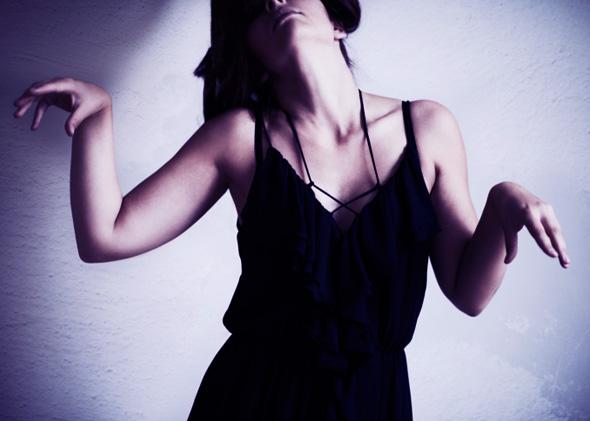At my first middle school dance, in 1996, I was the only person who didn’t know the Macarena.
Or, at least, that’s how I remember it. When the song’s opening giggle played, everyone else prepared to fold their arms and wiggle in time, while I stood there, baffled. The delegates at the 1996 Democratic National Convention knew the Macarena (albeit not very well). Al Gore (or at least his speechwriters) knew it well enough to use it in a joke that made fun of his legendary stiffness. When Al Gore is in better touch with pop culture than you are, you are pathetic.
The Macarena is not a complicated routine. A normal person would have been able to pick it up after the second or third go-round. But by the end of the song, I was still confused. By the time I finally mastered it, the long, cruel reign of the Macarena had already ended. My years of dance-related trauma had just begun.
Before I get into the details, I’d like to take a moment to send mental hugs to the girls (and guys) who will line the cafeteria walls this school year, arms crossed, head nodding ever so slightly, while everyone else gets down (or twerks!). Unless a group of cool kids decide to make you their pet, there aren’t really any perks of being a wallflower. It’s just lonely and humiliating, though not quite as humiliating as making a fool of yourself on the dance floor. I would like to be able to tell those awkward tweens to buck up, it gets better, etc. But as Simon Doonan recently wrote in Slate, it doesn’t always. Being unable to dance well is a lifetime affliction, one that, yes, may allow you to live an almost normal existence but will inevitably flare up any time you go to a wedding or hang out with friends who want to play Just Dance.
Here’s the problem: I have no sense of rhythm. In lieu of that, I tend to synchronize my boogying with emphasized lyrics. The results are odd, to say the least. Whenever a singer, say, draws out a word, my instinct is to slow my body down into a not-graceful riff on a ballet move, which doesn’t work, oh, 90 percent of the time. My focus on the words means I’m also really primed to hear lyrics as mandates—so when Mika sings “Running around like a clown on purpose,” I am very tempted to run in place and make a goofy face. Not attractive.
My un-coordination is, I’ve been told, contagious—I inevitably pull all partners down to my level. At one high school semiformal, a friend—a friend!—observed my date and me doing the good ol’ stiff-armed, far-apart slow dance and smirked, “Not on the beat, huh?” (Slow songs have beats?)
Furthermore, I cannot move more than two limbs independently of each other at once. I’m like Elaine from Seinfeld (or whoever her 2013 equivalent is—you tell me), except if I tried to do the thumbs and the kicks, I’d probably topple over. In fact, moving my feet at all while dancing is likely to end poorly, which is why I tend to lock my knees and shimmy only from the hips up. Let’s call it the half-body dry heave.
Yet—and this is the really, really sad part—I love to dance. It’s the only form of exercise that has ever released noticeable endorphins for me, instead of just causing pain and/or nausea. “So, dance!” you say, “like you don’t care who’s watching.” But I also suffer from pernicious social anxiety—and few things open one up to ridicule, especially during adolescence, as much as dancing badly. Alcohol “helps,” until it doesn’t. Like the time when I was dancing happily, maybe a little drunkenly, at a bar in college and a girl I didn’t know came up behind me. She spent a few counts mimicking me and then shouted, “You’ve got some moves!” In my dancing happy place, I didn’t recognize the scorn in her voice and said, “Thanks!” It wasn’t until the next morning that the interaction came into focus.
Dancing is a stand-in for so many of middle school and high school’s coveted characteristics: fluency in pop culture, sexiness, confidence. But of course the latter becomes a liability if it isn’t backed up by skill—self-assured dancing in the absence of rhythm is unforgivable to teenagers.
Thankfully, we don’t stay teenagers forever, and as I close in on 30, my lifelong self-consciousness about dancing is finally diminishing, and not because I’m always drunk.
About two years ago, I began doing Zumba—the Latin/hip-hop/whatever dance workout that is constantly hawked on late-night TV. (It also seems to be a considerable source of income for Pitbull and Lil Jon.) If you are often mistaken for Shakira at clubs, you will look awesome doing Zumba. But just about everyone else looks ridiculous performing the hip thrusts—especially at 10 on a Saturday morning. I am almost certainly the worst dancer in my class, but no one looks great—and that gives me a beatific sense of blending in. I can shake all I want without worrying someone will laugh (unless I trip while walking into class, which has happened—and in which case I deserve it). Furthermore, Zumba is highly repetitive. This makes me think I would have been much better off growing up in the 1950s—learning the Jitterbug must be easier than learning whatever free-form grinding kids do these days. (I did get an A in my college ballroom dance class, but I think that’s because I showed up and wasn’t high—my version of the polka mostly involved hopping. Grade inflation—it’s a problem.)
Anyway, Zumba’s helped me lose about 15 or 20 pounds. But even better than that? I think I am getting really close to finding the beat. Someone has even created a Zumba routine using the Macarena. In two or three years, I just might be ready to try it.
